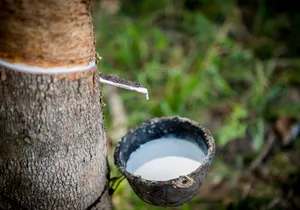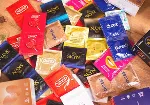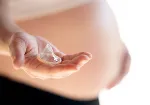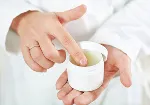How is a condom made?

Completely airtight and waterproof, the condom is the only contraceptive capable of protecting you from sexually transmitted infections when used correctly. To achieve a reliability rate of almost 100% against unwanted pregnancies, it is subject to a rigorous manufacturing process, including permanent quality controls. From the latex harvest to the final tests, discover all the stages of condom manufacturing .
Latex harvest
Also called a condom or more colloquially a condom, the condom was originally made from an animal membrane. Today it is mainly made from natural latex, a milky liquid from rubber trees. This tree, native to Southeast Asia, contains a sap with exceptional characteristics. The latter is harvested from trees of a well-defined age group, which alone can provide a sufficiently concentrated latex. To harvest the sap from the rubber tree, the arborist makes a cut in the bark of the tree in order to release the latex which then flows into a container. If each incision can provide up to 7 liters of latex in half a day, it is necessary to wait at least 4 days before you can harvest latex again on the same tree.
Preparation of latex
Latex is a material with natural antibacterial properties. Its role is precisely to protect the tree against parasites, bacteria and other diseases. Even after transformation, it retains its antiseptic qualities particularly appreciated in the medical world. After its harvest, it undergoes a battery of tests which aim to ensure its concentration and its natural qualities. Latex is a whitish, slightly viscous liquid with properties similar to those of milk. This is why it is likely to curdle and turn when it is in the open air. To prevent it from deteriorating, it is therefore mixed with stabilizing, preserving and vulcanizing agents shortly after its harvest. This addition makes it possible to retain all of the physical and chemical properties of the latex before the soaking step.
Dip molding
Once harvested and prepared, the latex is stored and kept at temperature in a tank before being used to make male condoms. Phallic molds are then gently immersed in the latex, forming an almost invisible layer on their wall. This latex film undergoes a first drying phase in a filtered environment in order to avoid any atmospheric contamination. Once dry, the mold is again soaked and dried in order to reinforce the solidity of the latex film. At the end of this process, the end of the membrane is rolled up to form a light bead which will form the base of the condom. Of course, there are different sizes of molds to offer condoms of varying length, width and circumference. Similarly, this manufacturing technique has made it possible to develop textured condoms, made from pearl, grooved or ribbed molds.
The vulcanization stage
Indispensable for the manufacture of condoms, vulcanization aims to improve the elasticity and resistance of the latex by providing it with sulfur. The condom, still placed on its mold, is baked at a temperature of 50 to 120 ° C. After vulcanization, comes the rinsing step which eliminates the majority of allergens accumulated during the manufacturing process. Using high pressure jets, the condom is detached from its mold before being dried and then rolled on itself.
Lubrication
Lubrication is an important step in the production of condoms since it improves the sliding power of the latex, a guarantee of solidity, comfort and resistance when it is used. This stage also makes it possible to facilitate the packaging and the installation of the protection. The condom is coated with a lubricant, generally based on glycerin or silicone, respectful of the epidermis and mucous membranes. Non-aggressive for latex, this lubricant is meticulously dosed to contribute to your comfort without distorting your sexual intercourse.
Quality controls and tests
Each stage of condom manufacturing is subject to a series of rigorous quality tests and controls. First of all, the quality of the latex is carefully checked in order to guarantee optimal elasticity and resistance. At the factory, condoms are subjected to electronic tests to detect defects invisible to the naked eye, systematically ruling out non-compliant subjects. Resistance tests are then carried out for each batch. For this, samples are taken and then filled with a specific amount of water. Any leaks are detected using blotting paper. In the event of a defect, the entire batch is discarded and declared unfit for sale.
Among the batches which pass the waterproofing test, some are subjected to the artificial aging test which aims to ensure that the condoms retain all their qualities, even when they reach their expiration date. The condoms are this time exposed to high temperatures which make it possible to artificially age the latex. Only batches having passed this test are authorized to continue the marketing process. Certain batches are subjected to an additional control with the so-called ?inflation? test. This experiment consists of inflating a condom to its breaking point in order to test its elasticity and its resistance. To pass this test, the pulling force of the condom must allow it to contain 40 liters of air before breaking.
Packaging and traceability
The batches having successfully passed the tests and quality controls then pass to the packaging stage. The condoms are then individually wrapped in hermetically sealed bags by thermal welding. In order to guarantee flawless traceability, each condom has a lot number which allows you to know its route with precision. The manufacturing process ends with the packaging of condoms, packaged in packs of 6, 12 or 24.
From the latex harvest to marketing, the manufacturing of condoms meets very strict standards to guarantee your safety. It depends on a rigorous process, designed to provide resistance and elasticity to male condoms. Quality of raw materials, resistance tests and traceability, everything is done to offer you an effective solution against sexually transmitted diseases and unwanted pregnancies.





